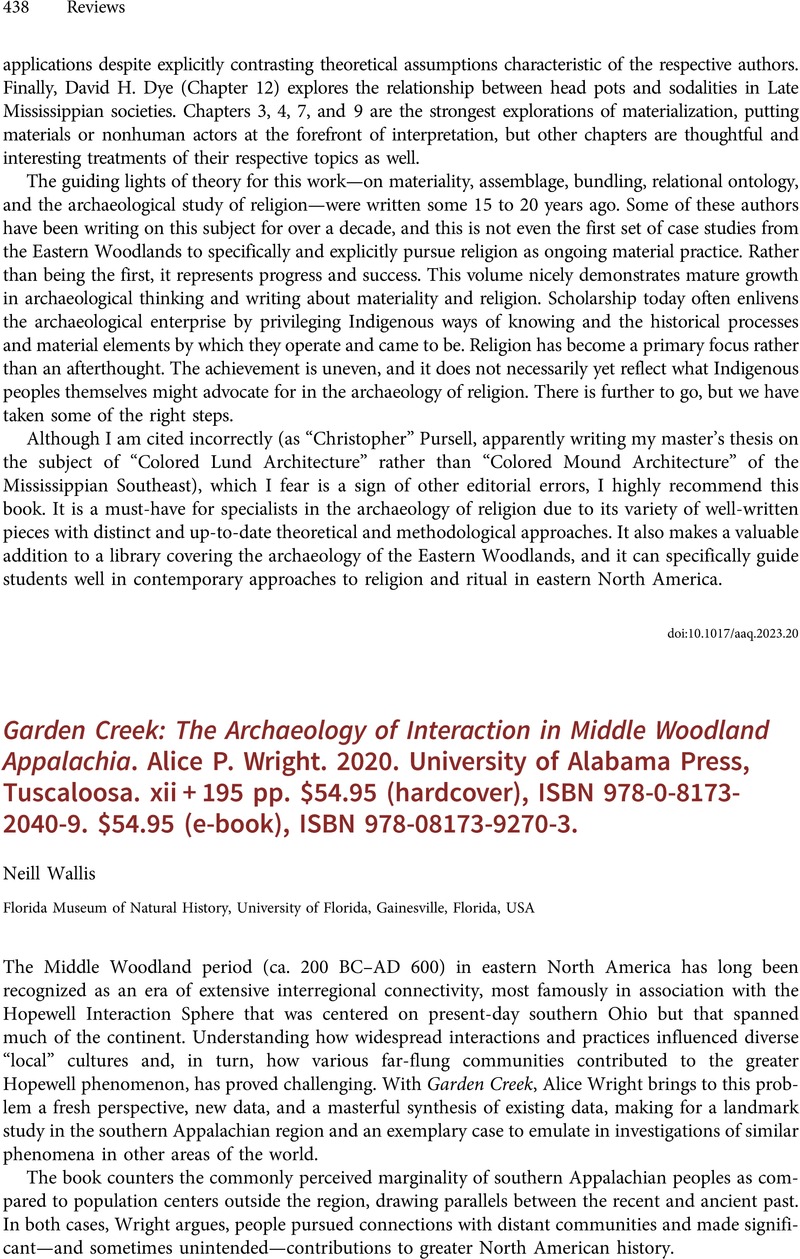No CrossRef data available.
Article contents
Garden Creek: The Archaeology of Interaction in Middle Woodland Appalachia. Alice P. Wright. 2020. University of Alabama Press, Tuscaloosa. xii + 195 pp. $54.95 (hardcover), ISBN 978-0-8173- 2040-9. $54.95 (e-book), ISBN 978-08173-9270-3.
Review products
Garden Creek: The Archaeology of Interaction in Middle Woodland Appalachia. Alice P. Wright. 2020. University of Alabama Press, Tuscaloosa. xii + 195 pp. $54.95 (hardcover), ISBN 978-0-8173- 2040-9. $54.95 (e-book), ISBN 978-08173-9270-3.
Published online by Cambridge University Press: 23 March 2023
Abstract
An abstract is not available for this content so a preview has been provided. Please use the Get access link above for information on how to access this content.

- Type
- Review
- Information
- Copyright
- Copyright © The Author(s), 2023. Published by Cambridge University Press on behalf of the Society for American Archaeology


